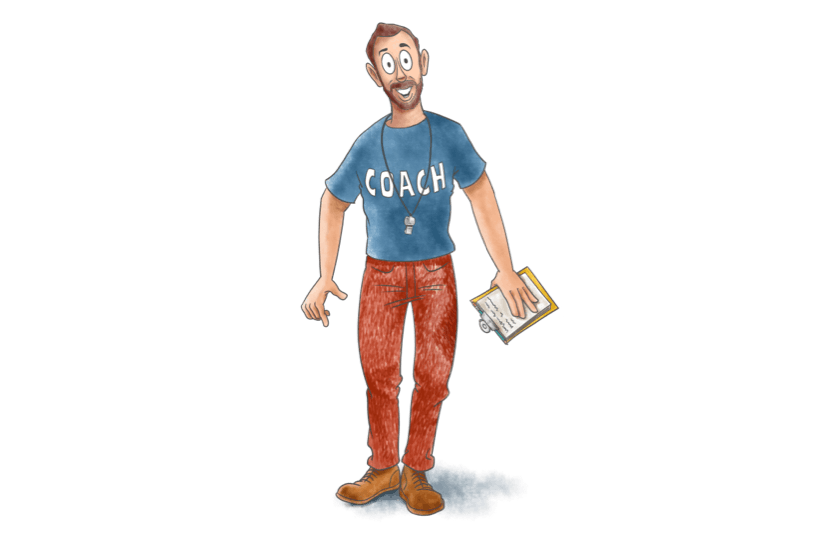
“Swipe me!” it shrieks.“Swipe me!”
It’s barely sunrise and the red circle has begun to wreak havoc. Subtly, at first. But like clockwork, it recruits its first round of troops for the day.
The thumb obliges to the request without another thought. The captivating power of the red circle is growing stronger as the minutes tick by. Lurking in the background until a flash of the home screen alerts her attention.
Now! This is it! Glowing, triumphant, it urges Angela's thumb to come closer. Her brain's desire centre is overloaded with the possibility of obtaining a reward.
“What could the notifications be? Do I have a message? A new comment? Did somebody like me? Connect? Pin me? Tweet, retweet me?” Anxiety is rising within her as she fights to rid the colour from her screen.
The red circle knows Angela’s susceptibilities and oh, does it play to them well.
Before he knows it, she’s captured. Trapped. Her thumb stuck in a perpetual motion. App to app, page to page, she starts the journey with no end - the race to rid the red circle.
The race continues as she devours her breakfast without a thought, scrolling, swiping, tapping. The news is playing in the background, her attention fleeting between the stories on the news and the bold text in her inbox.
She sorts through the pile of unreads. Her thumb opening and eyes skimming the messages labelled ‘critical’ and ‘important’ as her ears filter through the weather, stocks, attacks. A while goes by and her inbox is finally clear. Check. Task complete. She sighs and lets her thumb rest on the home button for a moment before she clicks. She knows what’s coming next and decides it’s best to find the lock button quickly, denying the red circle any further control.
Angela makes her way to work, placing her headphones over her ears and clicking play before opening to the dog-eared page in the book she’s been reading for weeks. Arriving at the office, she relaxes into her office chair to begin drafting replies to the messages she read only an hour ago. She doesn't remember a single word from any of the emails.
She opens her inbox and grimaces at the sight of all of those new bold circles. Managing to scroll past them to this morning’s batch, she gets onto drafting her replies. She finds herself having to read over every message she received. This morning’s effort had been futile. Again.
It’s no surprise that she’s already stressed for time. She's interrupted by a knock at the door. It’s a coworker that’s arrived with her favourite coffee, and of course he invites himself in. They exchange conversation about their weeks before parting ways.
"Right. Where was I?" Angela questions herself.
Before she has the chance to remember, she recalls something else. Her 10am meeting. The slides have been compiled and the agenda written, but surely one last look will be of some benefit? The emails need to be sent, but it’s important that she has a look at this material too.
She scrolls through the presentation a few times, reading the headings and a few key words before heading out for the meeting. The emails continue their slumber, nestled in the drafts folder.
After the meeting is over, she sits down and listens to her voicemails while she organises her notes. She spends about 23 minutes and 15 seconds to type some up, leave some in her notebook and send some in an email to the client. Oh! Email. That’s where she was.
The effects of the interruptions and flickering between tasks are beginning to become obvious on Angela's productivity.
Mental delay, for starters. The tasks are going to take longer, and the quality of her work will drop. She’ll feel like her workload is forever increasing when in reality, it hasn’t changed at all.
Not only is she getting less done, it’s draining her energy too. She thinks she’s multitasking - some email here, some performance reviews there. Sometimes it even feels like she’s getting stuff done.
However Angela couldn’t be further from the truth.
The human brain is designed to be able to focus one one thing at a time. So every time Angela thinks she’s multitasking, task switching is actually occurring.
Only about 2% of the population can actually multitask whilst performing activities that require cognitive ability. This puts an immense amount of strain on her brain, and for each switch in task, an equal amount of attention is drawn from the task she was working on in the first place. It’s been discovered that the average time to draw attention back to a task after distractions and diversions is 23 minutes and 15 seconds.
As a manager, Angela’s team come to her with all sorts of issues that divert her attention from the task she’s trying to complete. If that happened, say, 10 times in a day (not an unreasonable amount). That could add up to 4 hours of wasted time, or half of her work day. The stress levels of managers and executives makes a lot more sense when you really think about the composition of their day.
She’s back on track, or so she thinks. Angela hits“reply all” to a company-wide email and clicks send. Her attention had switched to the conference call she’s on with her PR agent overseas, and she won’t know about the e-mail mishap until her assistant sheepishly informs her of what’s happened.
Let's talk about the two main areas why Angela’s type of ‘multi-tasking’ is going to be of detriment to her work.
1. It damages her brain
The switching process is not only exhausting, but the level of grey matter density in the brain is negatively related to the level of ‘multitasking' a person performs. That is, the part of the brain that governs cognitive and emotional control and empathy deteriorates as a person continually task-switches.
It also places a massive amount of stress on the brain. When considering tasks that can be performed automatically, on a sort of ‘auto-pilot’, we do okay. The brain is well-equipped enough to think: “Ok. I can do this one without thinking, and this one I’ll think about” Like making a cup of tea whilst on the phone. However, what our noggins aren’t equipped to cope with is processing two or more cognitive tasks at once.
Like Angela trying to listen to the news and read emails, she ended up forgetting what the emails were about, and it’s safe to say she probably wouldn’t have remembered what was on the TV either.
Secretions of adrenaline and cortisol are also found to increase when the brain tries to multitask. Much like the urge of checking notifications, reaching a clean inbox and mindlessly scrolling through Twitter, multitasking is addictive. The brain lulls itself into a opioid-like feedback loop that treats us for drawing our attention to something after losing focus.
2. It makes her less productive
The multitasking paradox, published in a 2013 issue of HBR outlines, minute-by-minute, the detrimental effects of task-switching on productivity. It tracks the activities of two workers: a manager’s dream, and an unfocused, unproductive worker.
The drop in productivity as a result of task switching has been found to be as high as 40%, especially amongst those who consider themselves ‘good’ at multitasking.
Back to interruptions, quickly. The drop in productivity and wasted time(23 minutes and 15 seconds a pop) is most relevant for requests that involve thinking. So if Angela is asked to, say, sign a document- she may just be able to avoid being cognitively disrupted.
Can task switching ever be useful?
In short, yes.
But not multitasking in the sense of doing two things at the one time. More like… Doing one thing, acknowledging that you’re going to take a break from that thing to do another, and then get back to working on the primary task.
It can also be useful if the secondary task is somewhat related to the primary one, or if it will assist in getting the job done. For example: I’ve got writers block. So I take a break from writing, read a few articles for inspiration, have a brilliant thought and get back to writing. You see why it would be useful in that case, right? Sometimes a problem just needs to sit for a while before a solution is reached.
How can we stop multitasking so much?
We’re all victim to a wandering mind, and training focus and attention is a huge task. However the benefits of a clear mind with as little distraction as possibly is essential to do good cognitive work.
I’m currently in the middle of compiling a few tools, both analog and digital, that I’ve found helpful. Admittedly, I have a problem with task-switching (I may have checked social media a few times whilst writing this…)
I’ll be able to share them with you soon. In the meantime, or if you know you’ll forget to check back in (let’s be realistic) I write a monthly update full of our thoughts in the form of Yarno news and blog posts, which you’re welcome to become a part of.
You can do this right here! *points to the bottom of the screen*



































